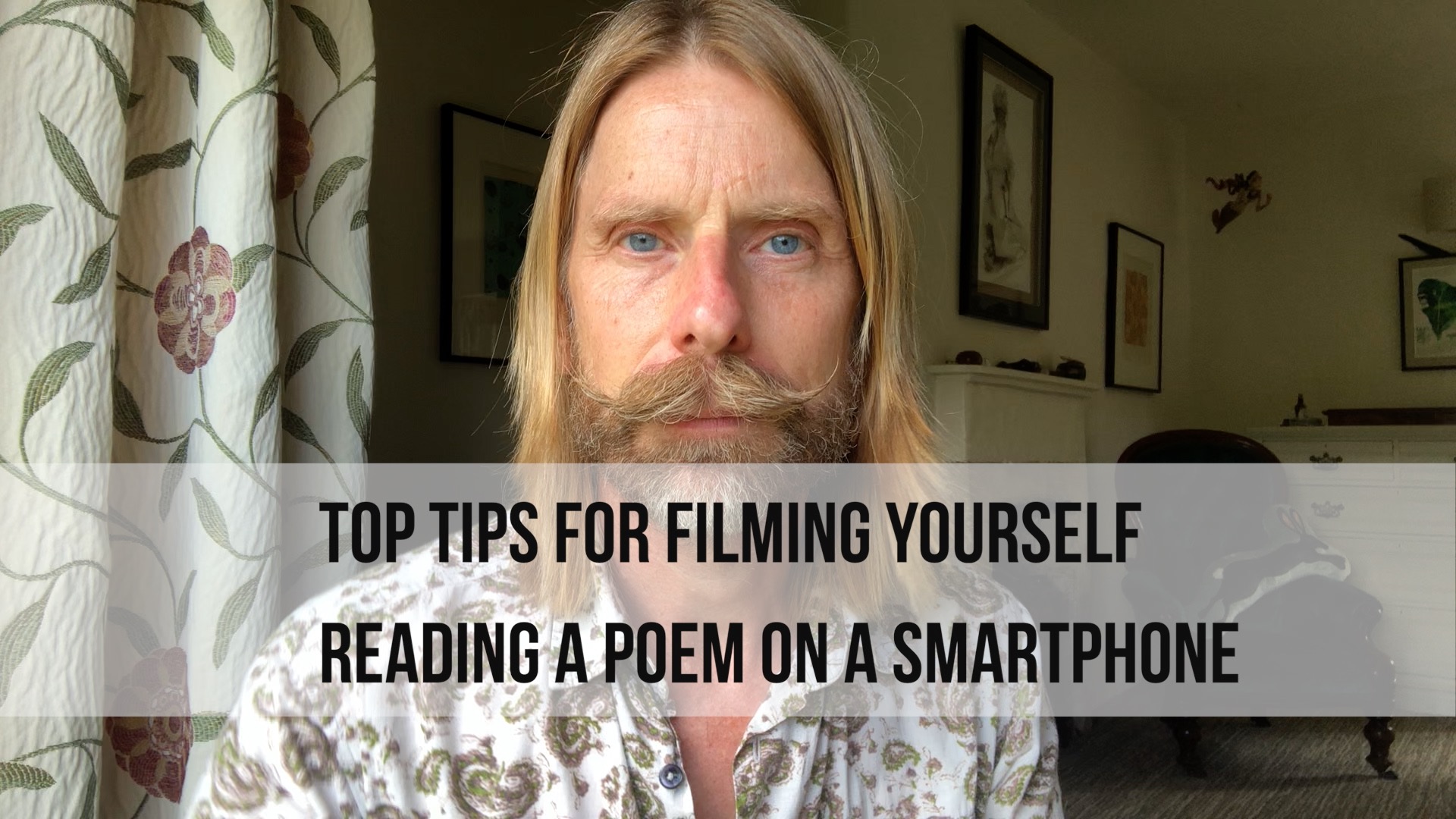Dominic Weston shares top tips for filming yourself reading a poem on a smartphone.
As well as being a producer of wildlife and adventure programmes Dominic also writes poetry that has been published in numerous journals, magazines and anthologies including Magma Poetry, The North, Agenda, Under the Radar and Black Bough Poetry.
Dominic’s top tip for when your filming yourself reading a poem
By shooting a small piece of footage that you can pay back and check you can see if everything is as you planned it, that you are in focus, you could be heard and that there is nothing distracting in the background.
Aspect ratio or Orientation – What’s the best way to hold your phone? Vertically, like you are going to make a call, or horizontally like a widescreen TV screen?
Support and Stability – The best way to stay relaxed and in control while you film yourself if to find a way to securely support your smartphone, so you don’t have to hold it and your poem, and you don’t have to keep checking if you’re still in the frame.
Lighting – Video images are just a form of reflected light, so the better the lighting you use in your recording the better your images will be.
Exposure – This is closely connected to lighting, but the main consideration here is that your smartphone might expose your image too brightly or too darkly for your face to be clearly seen, so adjust the exposure of the image (sometimes this is done by tapping your face on the screen) so that your face is properly exposed, rather than the window or the scene behind.
Focus – Just as most smartphones adjust exposure automatically, they can do the same for focus too. If there are other items in the frame, then the smartphone might focus on them instead of your face.
Sound – Sound is often overlooked but is essential to any recording. Don’t forget to do a test recording to hear how it sounds and to see if you are loud enough. You might be surprised by the sound of traffic, machines, people even birds that you hadn’t noticed. Indoors is generally quieter than outside but be careful about echoing rooms with hard surfaces. Soft furnishings and curtains dampen sound and let the voice sound more natural.
Another distraction to audio recordings is the noise of rustling papers as you hold a poem. See if you can find somewhere to stick up your poem near the smartphone camera so you can still look at it and not have to hold your poem.
Composition – You might be the main focus of the image, but other elements will appear in your shot, especially in the background.
If you are adding subtitles to your film then make sure that you have enough space beneath your chin as you speak to leave room for one or two lines of text, without it feeling cramped.
Eyeline – The eyeline is the direction the reader’s eyes are looking in. This is often overlooked but can really affect how the viewer connects with the film. If the reader looks straight at the camera, we feel a strong connection. If they are looking off to the side, because they are reading a poem they are holding to the side, then there can be much less of a connection. Try positioning your poem as close to your camera as you can, in a text size that you can read at a distance. If it is a long poem, then your eyes will travel down as you read.
Film edited by Helen Dewbery during lockdown.
